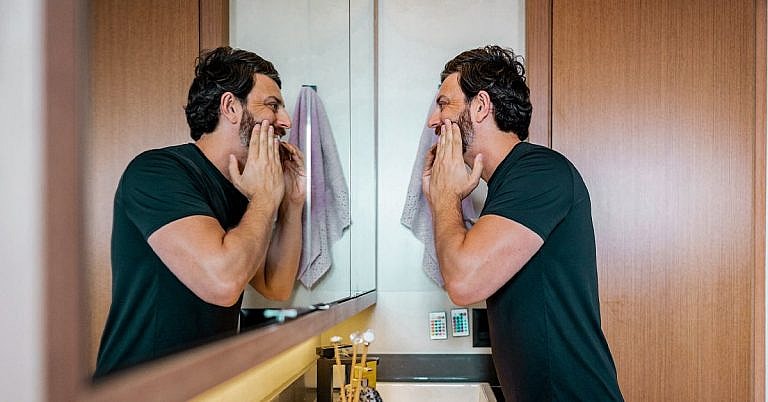Volkmann Contracture: Symptoms, Causes, Diagnosis, Treatment
Volkmann contracture, or Volkmann ischemic contracture, is a permanent shortening of your forearm muscles. It causes a “claw-like” posture of your hand, wrist, and fingers.
Volkmann contracture usually results from traumatic injuries that cause acute compartment syndrome of your arm. Acute compartment syndrome is a medical emergency. It occurs when the pressure in a muscle increases dangerously high.
Symptoms of Volkmann contracture can vary depending on the severity of muscular injury. Some people may have only two or three fingers affected, while others have all their fingers and wrist affected.
Let’s examine Volkmann contracture in more detail, including causes, symptoms, and outlook.
What causes Volkmann contracture?
A traumatic injury usually causes Volkmann contracture. The most common injury is a supracondylar fracture of the humerus. This fracture occurs in the lower part of your upper arm bone. The fracture can lead to a medical emergency called acute compartment syndrome.
Acute compartment syndrome occurs when the pressure inside a muscle becomes dangerously high. This often causes severe pain. It requires immediate medical attention.
Any other cause of acute compartment syndrome can potentially result in Volkmann contracture. Other causes include:
- animal bites
- tight bandages and dressings
- burns
- increased muscle size
- intensive and extensive exercise
- tumors
- bleeding into a compartment in your arm
- injections in your forearm
- forearm surgery complications
- soft tissue injury
Volkmann contracture can also result as a complication of acute arterial insufficiency. This is when part of your body loses its blood supply. A type of blood clot called an arterial embolism usually causes it.
Volkmann contracture appears to be most common in males in their 20s.
Pseudo-Volkmann contracture
Pseudo-Volkmann contracture is a condition that causes similar symptoms to Volkmann contracture but has a different root cause. Pseudo-Volkmann contracture happens from the entrapment of tendons in your forearm without any damage to the forearm muscles due to loss of blood supply.
The outcome for pseudo-Volkmann contracture is usually good when it’s recognized and treated early.
Volkmann contracture symptoms
Volkmann contracture involves the shortening of one or more of your forearm muscles. This shortening can cause your fingers and wrist to curl in a “claw-like” position.
Symptoms can be mild, moderate, or severe:
Mild Volkmann contracture
Mild Volkmann contracture is limited to the muscle flexor digitorum profundus. This muscle runs down the front of your forearm and allows you to flex your fingers.
People with mild Volkmann contracture may only have shortening of two or three fingers, often the middle and ring fingers. Usually, there are no or minimal neurological symptoms.
Moderate Volkmann contracture
Moderate Volkmann contracture involves your flexor digitorum profundus and flexor pollicis longus muscles. Flexor pollicis longus allows you to flex your thumb. Other muscles in your forearm that allow you to flex your fingers and wrist may also be involved.
In people with moderate Volkmann contracture, all five fingers and the wrist are often involved. They may also lose sensation in parts of their hand or lower arm.
Severe Volkmann contracture
Severe cases of Volkmann contracture involve both the flexor and extensor muscles. It results in severe distortion of the fingers and hand with significant loss of sensation.
Acute compartment syndrome symptoms
Acute compartment syndrome can cause symptoms that start suddenly, such as:
- severe muscle pain
- swelling or bulging of a muscle
- tightness or difficulty moving a body part
It can occur anywhere in your arms and legs, often after traumatic injuries.
Potential complications of Volkmann contracture
Volkmann contracture can result in a partial or complete loss of function of your hand depending on the severity of muscle damage. Some people also have mild to severe loss of sensation in their hand or forearm.
When to get medical help
Get medical help if you have problems with the function of your hand or wrist, especially if the problems occur after a sudden injury. A doctor can order tests to help find the underlying cause.
Medical emergency
It’s critical to get immediate medical attention if you develop symptoms of acute compartment syndrome, especially if these symptoms develop after a sudden injury.
Go to the nearest emergency room if you have the symptoms listed in this article.
Volkmann contracture diagnosis
Some doctors may make the diagnosis based solely on the results of a clinical exam where they:
- consider your personal and family medical history
- consider your symptoms
- perform a physical exam
You may also receive additional tests, like:
- X-rays
- tests to measure your nerve function
- tests to measure your muscle function
Volkmann contracture treatment
The primary emergency treatment for acute compartment syndrome is fasciotomy. In this procedure, a surgeon cuts the layer of connective tissue around your muscle to relieve pressure.
Once Volkmann contracture has already developed, treatment depends on the severity of your symptoms.
Mild cases may be treated with:
- physical therapy
- splinting
- muscle stretching
- surgery to lengthen your tendons
Moderate contractures may require:
- surgery to lengthen your tendons
- neurolysis, a surgery to release a nerve from scar tissue
- tendon transfer surgery
Severe contractures may need a surgery called radical debridement. In this procedure, a surgeon removes damaged muscle tissue.
Living with Volkmann contracture
Getting immediate treatment can help improve the outlook of people with Volkmann contracture. A prompt fasciotomy within 6 hours can reduce muscle damage caused by acute compartment syndrome.
Nearly all cases of Volkmann contracture that occur during childhood cause a permanently short limb.
People with mild contracture may be able to regain normal function in their wrist and hand. People with more severe cases may not regain full function.
Can you prevent ;Volkmann contracture?
The primary cause of Volkmann contracture is acute compartment syndrome, which is often caused by a sudden injury.
You can take precautions to avoid traumatic injuries by:
- wearing proper sports equipment
- avoiding situations with a high risk of falling
- wearing a seat belt while in a vehicle
Some causes of Volkmann contracture, like tumors, are mostly unavoidable.
What is Volkmann Contracture?
Volkmann Contracture is a condition that results in the permanent shortening of forearm muscles, leading to a claw-like deformity of the hand and fingers. It typically arises due to a lack of blood flow to the forearm muscles.
What are the Symptoms of Volkmann Contracture?
Symptoms of Volkmann Contracture include pain, swelling, and a noticeable deformity in the hand or fingers. Other signs may include stiffness and an inability to move the hand or fingers properly.
What Causes Volkmann Contracture?
The primary cause of Volkmann Contracture is an injury that disrupts blood flow to the forearm muscles. This can occur due to fractures, especially of the elbow or forearm, or from tight bandages and casts.
How is Volkmann Contracture Diagnosed?
Diagnosis is primarily based on physical examination and patient history. Doctors may use imaging tests like X-rays, MRIs, or electromyography to assess muscle and nerve damage.
What are the Treatment Options for Volkmann Contracture?
Treatment for Volkmann Contracture focuses on restoring blood flow and function. This may include physical therapy, splinting, and in severe cases, surgery to remove or repair damaged tissue. Early intervention is crucial to prevent permanent damage.
Can Volkmann Contracture be Prevented?
While it might not always be preventable, quick treatment of forearm injuries and care while applying medical casts can reduce the risk. Ensuring proper blood flow and monitoring for any signs of complications are also key preventive measures.
Takeaway
Volkmann contracture is when the muscles in your forearm become permanently shortened and cause your fingers and wrist to curl in a “claw-like” position. Acute compartment syndrome most commonly causes it.
The symptoms of Volkmann contracture can range from mild to severe. Treatments like physiotherapy or surgery may help improve the function of your hand and wrist.








This is an informative post! Understanding the symptoms and causes of Volkmann Contracture is essential for early diagnosis and effective treatment. It’s great that you’re spreading awareness about this condition, as many people aren’t familiar with it. Thanks for sharing the details on potential treatments and the importance of seeking medical advice. Looking forward to reading more health-related insights from you!
This is a highly informative post on Volkmann Contracture! It’s essential for people to understand the symptoms and causes to ensure early detection and treatment. The detailed explanation of the diagnosis process and available treatment options is especially helpful for those who might be affected or know someone who is. Thank you for sharing this valuable information!
This is a very informative post! Volkmann contracture is a serious condition that can lead to permanent functional impairment if not addressed promptly. It’s important to be aware of the symptoms and causes, especially if there’s a history of forearm injury or trauma. The detailed explanation of the diagnostic process and treatment options is really helpful for someone trying to understand their condition or that of a loved one. Thanks for sharing this vital information!